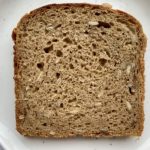I had heard of peasemeal before, but never had never tasted it in anything, so when I saw it on display in the Deli Ecosse cafe shop in Callander, I had to bag a pack. Peasemeal is produced by Golspie Mill and is made of yellow peas that have been roasted. It’s a fine dust of ground peas, yellowish-brown in colour and the smell is surprisingly chocolatey.
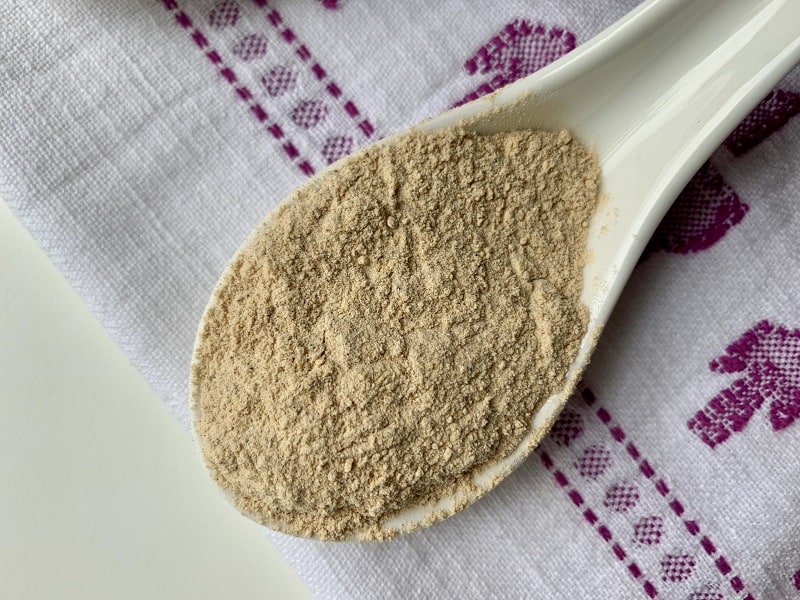
“Peasemeal is a highly versatile, healthy and nutritious food used since Roman times and growing again in popularity. This product is unique to Golspie Mill where it is made from roasted yellow field peas milled through three sets of mill stones to produce a fine yellow flour. Traditionally used for making peasemeal brose (adding meal to boiling milk or water with a knob of butter and seasoning to taste), it has many … innovative modern uses.”
Golspie Mill
It’s peasemeal’s high protein content that’s made me think about increasing the protein content of bread and baking a more protein-rich bread.
Where to buy peasemeal flour
Peasemeal flour is made by Golspie Mill in Sutherland, Scotland, UK and can be bought from the stockists listed here: http://www.golspiemill.co.uk/stockists.html .
What’s the typical protein content of bread?
The protein content of bread is normally between 7.5% and 9.5%. (Source: fabflour) This is based on a bread baked with mainly white or brown wheat flour which contains about 10-14g of protein per 100g of overall weight. Glutenin and gliadin – which together form gluten – are components of wheat protein and there is therefore a strong correlation between protein quantity and loaf volume i.e. the higher the flour protein percentage, the greater the potential loaf volume.
In order to increase the protein content of bread, you can add flours which contain higher levels of protein than wheat. Peasemeal (also referred to as brose meal) is an ideal ingredient to add – high protein-content and a flavour which will not overpower the overall flavour. The peas are roasted before being ground and the roasting enables greater access to protein (and starch).
Here are some alternative ingredients which will help to increase the overall percentage of protein of your loaf.
- Almond flour: 21g of protein
- Sunflower seeds: 21g of protein
- Gram flour: 22g of protein
- Peasemeal: 23.5g of protein
- Lupin flour: 43g of protein
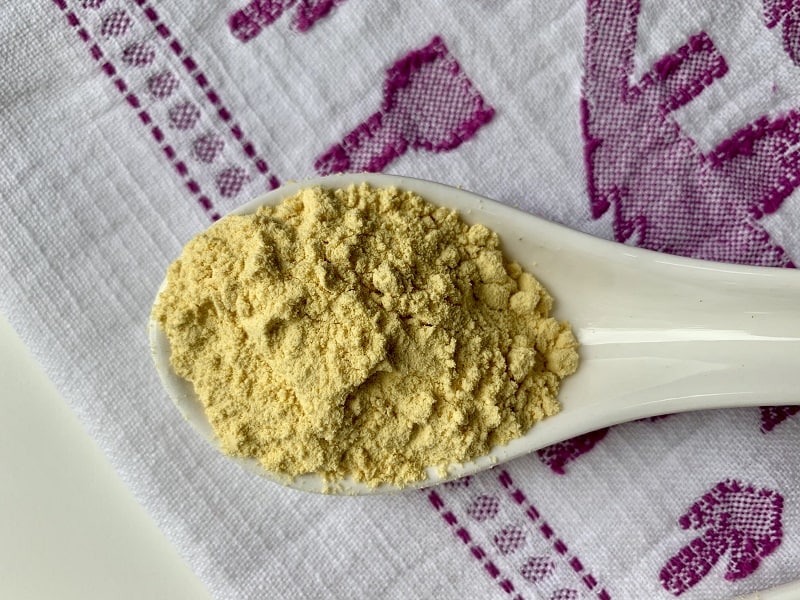
Protein-rich peasemeal bread recipe
The above is only one option for baking a bread which is more protein-rich than standard wheat-based bread. You can experiment with many different higher protein flours and seeds to put together your own version.
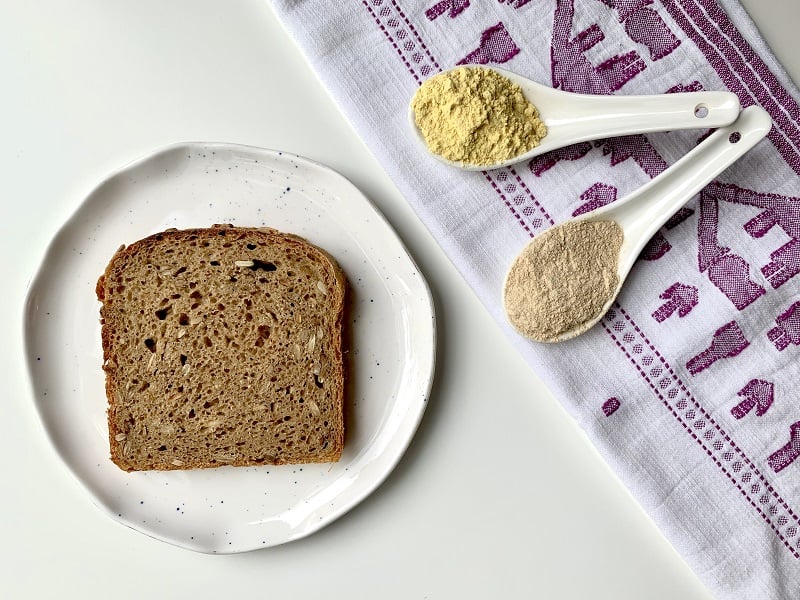
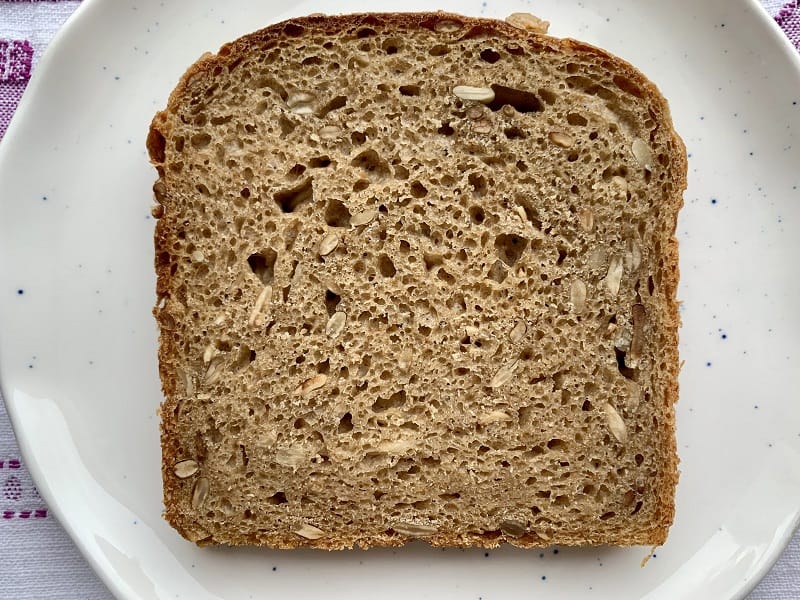
Protein-Rich Bread Recipe with Peasemeal
Ingredients
Sourdough
- 30 g sourdough starter
- 115 g wholemeal wheat flour
- 115 g water
Main Dough
- 325 g strong white flour
- 90 g Kamut flour
- 65 g peasemeal flour
- 30 g lupin flour
- 85 g sunflower seeds
- 10 g salt
- 345 g water
Instructions
How to make protein-rich bread
- Refresh the sourdough by taking 30g of sourdough from the fridge (or freshly made), and combining it with 115g of wholewheat flour and 115g water. Cover and leave to rest at room temperature for about 16 hours.
- Toast the sunflower seeds and leave to cool.
- in a large bowl, combine 230g of the sourdough (the rest goes back into the fridge for your next bakwith the strong white flour, Kamut flour, peasemeal flour, lupin flour, salt and water.
- Knead for 10 minutes, then place back into the bowl, cover and leave to rest at room temperature for one hour.
- Knock the dough back, add the sunflower seeds and shape into a loaf to fit into your pre-oiled baking tin.
- Place the dough into the tin, cover with a polythene bag to prevent the moisture from evaporating, and leave to rest for several hours until risen.
- Preheat the oven to 200 C.
- Bake for 50 minutes.
- Leave to cool on a wire rack.
